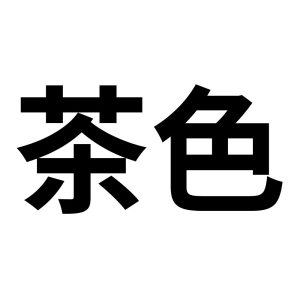In Japanese, chairo (茶色) literally means “tea color”.
Oddly enough, this color is brown instead of green.
Green tea leaves are green, and the liquor of most Japanese green teas is either yellow or green.
So it’s hard to imagine why brown would be the color associated with tea in Japan.
It turns out that this word is quite old.
At first, matcha was enjoyed by monks and then the nobility.
It would take a long time before the rest of the Japanese society would be able to drink tea.
Even when tea became available for everyone, ordinary people mostly drank bancha.
Let’s remember that sencha wasn’t invented until the 18th century.
Furthermore, this bancha had a different process at the time.
The mature leaves where pan fried, rolled in a woven mat, and left to dry in the sun.
As you can guess by now, the resulting tea had a brown color.
Also, tea was used as a dye to obtain this same color.
So, the word caught on and is still in use even though modern Japanese tea has a green color.


November 8, 2023
Hello, Ricardo
Thanks for sharing this.
It’s a provocative question, and it makes me realize a similar question: “Why does tea also refer to brown color in Chinese?”
The word “茶色” is also found in some ancient Chinese literatures. But they are just a noun, refers to the tea’s color, often with a word like “白” or “青” after them as an adjective to describe the specific color.
In my impression, most of the time, “茶色” only describes the translucent objects’ color, like glass, acrylic, and plastic. In the last century, many buildings’ windows and curtain walls were made from brown(dark amber?) glass, which was a popular architectural style, later spread to Hong Kong. We imitated this architectural style. You know, Hong Kong was a British colony at that time, and to most British, tea meant black tea. So I think, maybe the first time the Chinese word “茶色” stands as an adjective was in Hong Kong.
November 9, 2023
Hi Desmond.
I can’t speak Chinese, and also I’m not familiar with how the word was (or is) used.
But probably ancient Chinese green teas weren’t as green as modern Japanese tea. The main reason being that most Chinese teas aren’t steamed, and they are also withered (which increases oxidation).
Japanese teas aren’t withered, and they are steamed as quickly as possible. Plus, they aren’t left to dry in the sun.